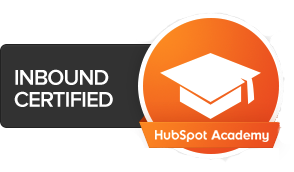Since I launched the crowdfunding marketing consulting arm of my business, I’ve been fortunate to be involved in a number of very successful crowdfunding campaigns (mostly on Indiegogo, a few on Kickstarter).
Due to the massive success of the crowdfunding industry, the perception is that it’s “easy”. Many individuals and businesses are jumping on the bandwagon, anticipating their idea on the back of a napkin will have brought in six-figures in funding by the end of next month.
Unfortunately, this leads to much frustration and many failures. In fact, almost 80% of Indiegogo campaigns fail.
There are a number of core elements required for a successful campaign, from marketing to manufacturing, and the mistakes I’ve seen made could be a book.
In this post, however, I wanted to offer an insight into a few key questions that ought to be asked right at the start. Questions that, if asked, can prevent a campaign being doomed before it even begins.

Am I over relying on the Indiegogo community to drive funding?
Many folks assume that once they’ve published a campaign on Indiegogo, the Indiegogo community will be the key source of funding.
I tend to see between 5%-25% of campaign funds come from the Indiegogo community. So, while it will be a funding source for campaigns, it can’t be over-relied on.
There are a few core audiences in Indiegogo campaign marketing to keep in mind:
Inner Circle – those closest to the campaign itself – the campaigners and their friends, family, and networks.
Brand Community – anyone aware of the brand running the campaign, such Facebook Fans and email subscribers, but who may not be personally associated with it.
Indiegogo Community – the communities of the crowdfunding platform – website visitors, email subscribers etc.
Outer Circle – people outside of direct networks and communities, that would care about this campaign and are likely to support it.
The Inner Circle will get the campaign early traction. The Brand Community will provide a second boost. The Indiegogo Community will become aware of the campaign following this early traction (due to the GoGo Factor). The Outer Circle is then what takes a campaign from good to great, and includes online and offline media, social media influencers, Facebook Groups, sub-reddits, forums etc.
Campaigners have to ensure that the three of these four audiences within their control are prepared, engaged, and ready to receive promotion. Relying solely on the Indiegogo audience is a common mistake, and one that often leads to failure.
Will the Indiegogo community even care?
Is your product unique and solving a real market need? The number of campaigners that I see launch a campaign without performing adequate research to accurately answer this question is astonishing (and family and friends saying “cool idea” doesn’t count – think bigger).
What’s more – a product may be truly unique, valuable, and solving an critical need. If the target audience isn’t on Indiegogo, though, then it’s a risky bet to put it there.
Crowdfunding communities aren’t identical to general e-commerce communities. Crowdfunding communities understand that backing campaigns isn’t a guarantee of a return on that investment and doesn’t mean a product will be arriving at their door in the near future. They’re a different demographic than the general consumer. Similarly, the Kickstarter and Indiegogo audiences are also a little different.
So, when considering your target audience for a crowdfunding campaign, do it through the lens of the crowdfunding platform demographic. I’ve seen fantastic products fail as Indiegogo or Kickstarter simply wasn’t the right place to launch.
Have I sufficiently prepared for an Indiegogo campaign launch?
Some of the campaigners I’ve worked with started preparing for their Indiegogo campaign more than a year in advance of their launch date. Most of this time is used to validate the product and build a community around it (such as email subscribers or social media followers).
And it’s not just about time. Launching a crowdfunding campaign is a financial investment, too. Building your community, creating multimedia content, collaborating with agencies or hiring team members, building prototypes, performing market research…it all adds up. And it’s all pre-launch, before you’ve made a dime.
As a rule of thumb, I’d suggest investing 10%-25% of your internal funding goal in campaign preparation. For example, if you want to raise $100,000, be prepared to invest $10,000-$25,000 in pre-launch preparation.
Before a campaigner even thinks about creating a campaign page and launching a campaign, it’s critical that they’re confident with their answers to these questions.
Having a strong, strategic foundation dramatically increases the likelihood of a campaign being one of the 20% that succeed and not 80% that fail.
Discover the simple system that guarantees you'll double, triple...or more...your email list.
We promise we don't spam, we don't email often, and we'll NEVER share your info with anyone else.



